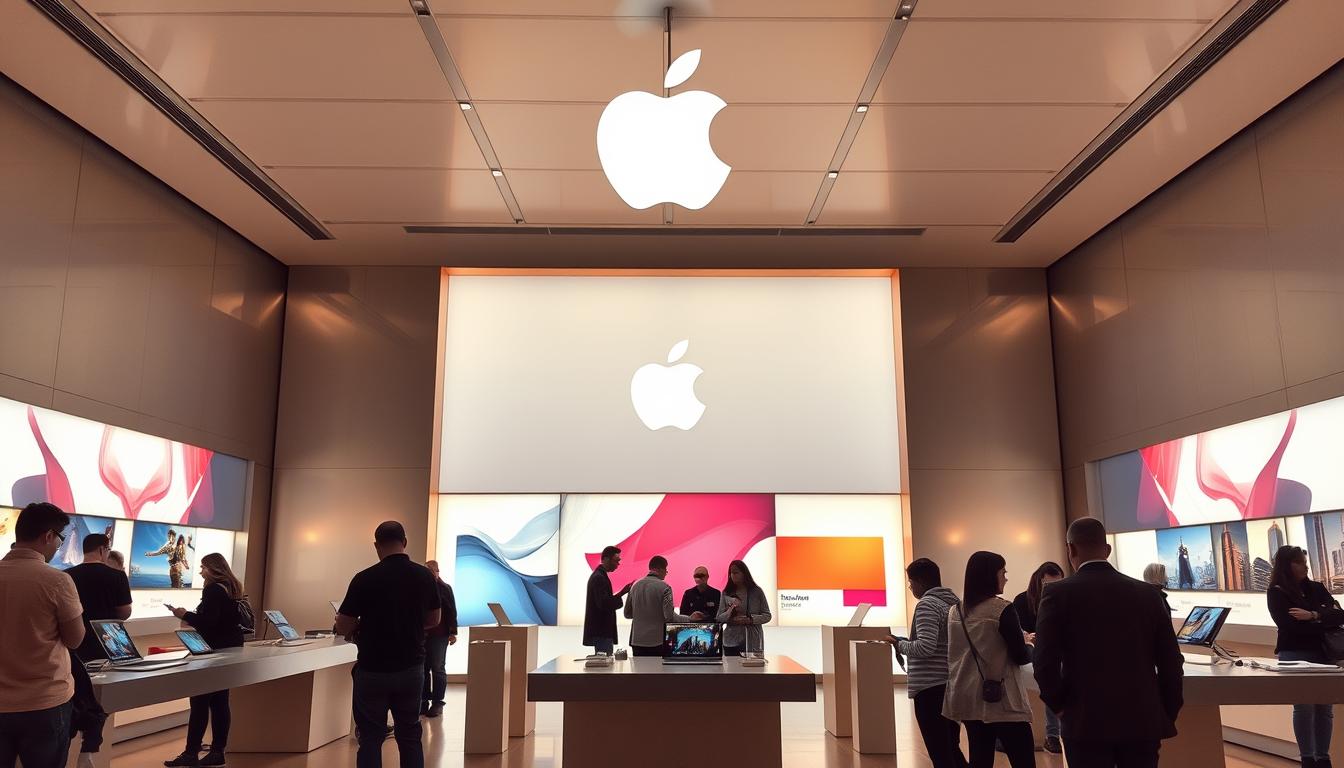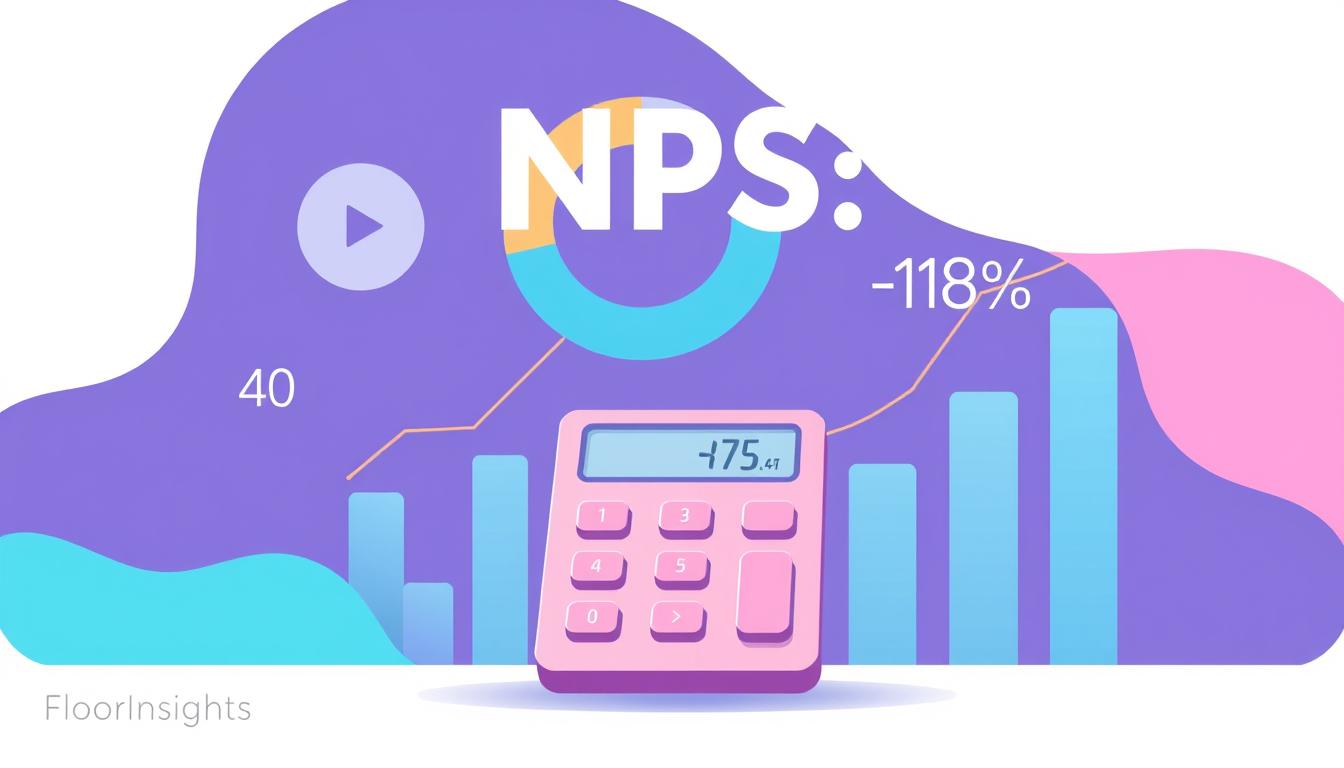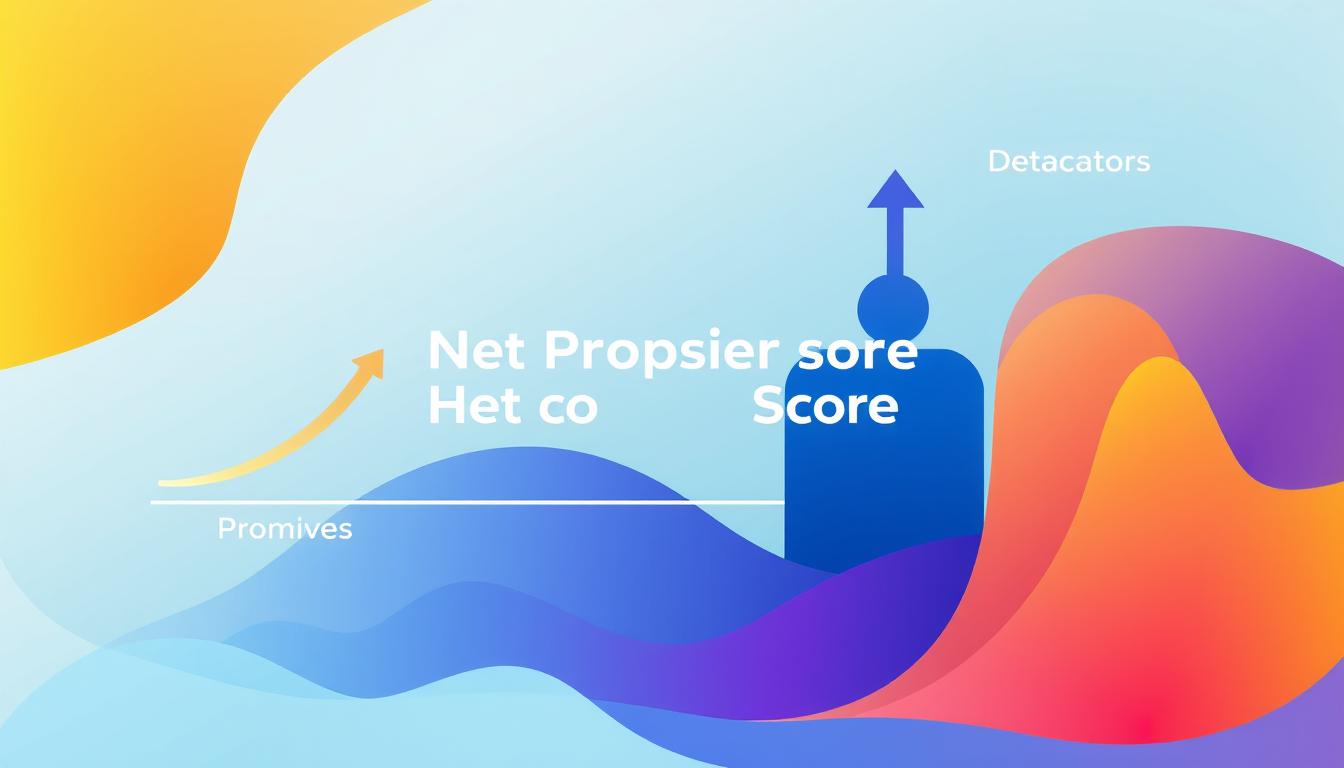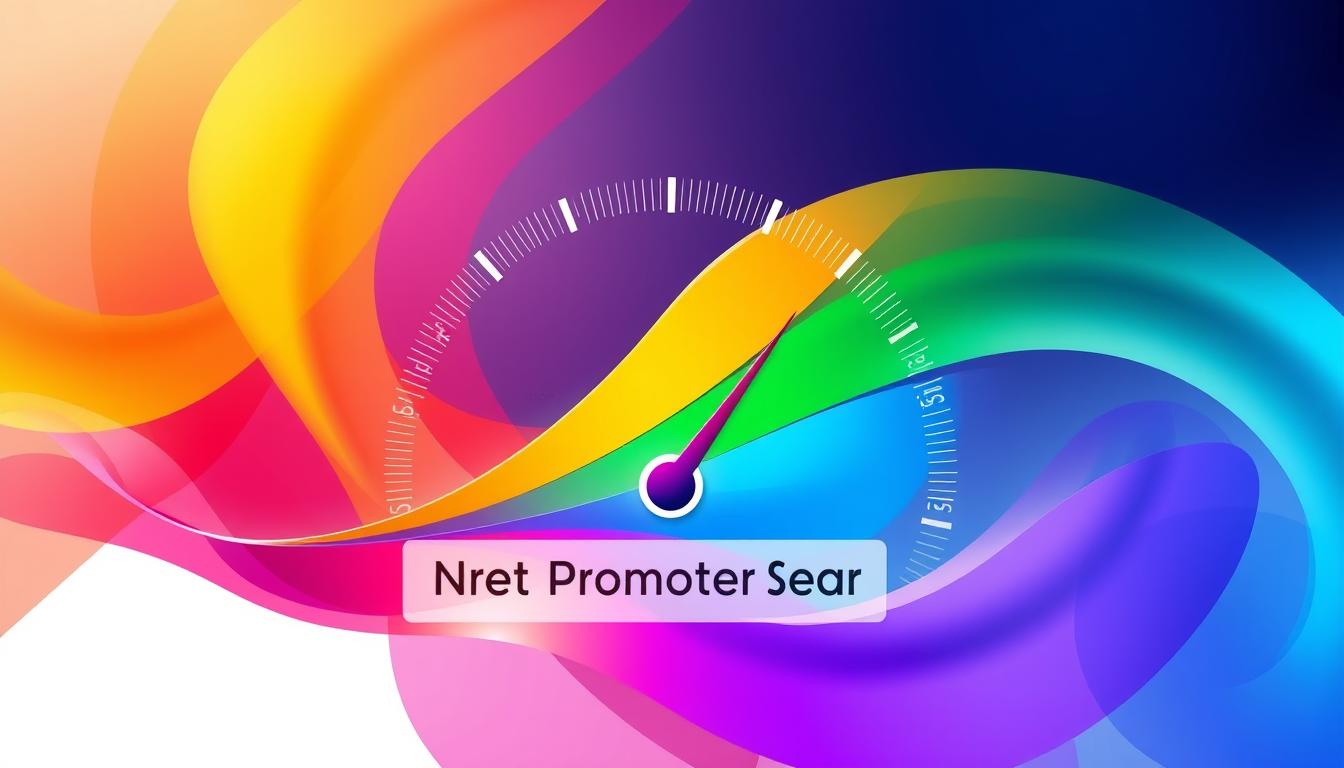Apple Inc., celebrated for its innovative technology and unwavering commitment to customer satisfaction, has masterfully employed the Net Promoter Score (NPS) to foster an exceptional level of customer loyalty. By seamlessly integrating NPS into their business strategy, Apple has effectively aligned their products and services with customer preferences, driving unmatched customer loyalty.
The success of Apple’s customer experience is deeply rooted in their application of NPS. This powerful tool allows the company to continuously gauge customer satisfaction, identify loyalty drivers, and implement improvements based on customer feedback. As highlighted in Apple’s annual reports, their dedication to exceeding customer expectations is evident through their rigorous analysis of NPS data. Industry experts consistently recognize Apple’s proficiency in leveraging NPS to maintain a competitive edge and ensure sustained customer loyalty.
Key Takeaways
- Apple prioritizes customer satisfaction through the effective use of NPS.
- The Net Promoter Score is integral to understanding and improving Apple’s customer experience.
- Continuous feedback analysis helps Apple identify key loyalty drivers and areas for enhancement.
- Apple’s success demonstrates the importance of NPS in fostering customer loyalty.
- NPS insights enable Apple to maintain a competitive edge in the tech industry.
Introduction to Net Promoter Score
Understanding the Net Promoter Score definition and its significance is vital for any business aiming to enhance customer loyalty. Developed by Fred Reichheld in 2003, this metric provides invaluable insights into customer satisfaction and the likelihood of them promoting a company’s products or services.
What is NPS?
The Net Promoter Score (NPS) is a widely recognized metric that assesses the loyalty of a company’s customer base. By asking customers a simple question: “On a scale of 0 to 10, how likely are you to recommend our product or service to a friend or colleague?” companies can gauge the level of customer satisfaction and identify promoters, passives, and detractors.
How NPS is Calculated
The NPS calculation formula is straightforward yet powerful. It involves subtracting the percentage of Detractors (those who respond with a score between 0 and 6) from the percentage of Promoters (those who respond with a score of 9 or 10). The result is a single number ranging from -100 to 100, which represents the overall sentiment of the customer base.
For example, if 50% of respondents are Promoters, 30% are Passives (score 7-8), and 20% are Detractors, the NPS would be:
| Metric | Promoters | Detractors | Net Promoter Score |
|---|---|---|---|
| Score | 50% | 20% | 30 |
Importance of NPS in Business
The NPS business impact is profound, as it correlates closely with business growth and customer retention. According to Harvard Business Review, companies with higher NPS exhibit faster and more sustainable growth rates. By leveraging the insights gained from the NPS, businesses can make informed decisions to improve customer experience, address pain points, and drive greater loyalty.
Apple’s Strategy in Utilizing NPS
At Apple, our approach to customer centricity hinges on the strategic use of NPS. Apple’s NPS implementation process begins with gathering invaluable customer feedback through various touchpoints, ensuring that we hear from a diverse set of voices within our customer base.
We continuously engage in strategic feedback analysis to identify trends, challenges, and opportunities for improvement. This data is meticulously reviewed and plays a pivotal role in shaping our product development and service enhancement initiatives. Each piece of feedback is a building block in our quest to deliver an unmatched customer experience.
Integrating NPS results into our strategic plans has allowed us to remain agile and proactively address our customers’ needs. By weaving insights derived from NPS into our operational strategies, we ensure that we remain steadfast in our commitment to excellence and innovation in every product and service we offer.
Furthermore, our leadership team periodically reviews NPS data, derived from former Apple customer service heads’ interviews and our robust service policies. This thorough examination helps us set realistic NPS goals and achieve desirable outcomes, reinforcing our position as a leader in customer satisfaction and loyalty.
Why NPS Matters for Customer Loyalty
The Net Promoter Score (NPS) is not just a metric; it is a direct indicator of customer loyalty and retention. By understanding the NPS loyalty connection, businesses can derive essential insights to boost customer engagement and satisfaction. High NPS scores signify that a significant portion of customers are not only satisfied but are also likely to stick with the brand in the long term.
The Connection between NPS and Customer Retention
The relationship between NPS and customer retention is well-established through numerous studies. For instance, companies with high NPS scores often report higher customer retention rates. This is because NPS serves as a predictive indicator of customer loyalty. When customers rate their likelihood to recommend a brand highly, they are demonstrating a level of satisfaction that correlates strongly with future loyalty.
- NPS scores offer a clear view of customer sentiment.
- High NPS scores directly contribute to improved customer retention metrics.
- Brands like Apple have capitalized on high NPS scores to maintain a loyal customer base.
Understanding Customer Loyalty Measurement
Customer loyalty measurement tools play a critical role in obtaining actionable insights into customer behavior. NPS is among the most effective tools used to gauge customer loyalty. It stands apart from other customer retention metrics due to its simplicity and the depth of information it provides. Loyalty measurement tools enable businesses to track, analyze, and respond to their customers’ needs efficiently.
Here are some key metrics and tools used for measuring customer loyalty:
| Metric | Description | Advantage |
|---|---|---|
| Net Promoter Score (NPS) | Measures the likelihood of customers to recommend a brand. | Simple yet powerful; offers direct insights into customer loyalty. |
| Customer Satisfaction Score (CSAT) | Assesses customer satisfaction at specific touchpoints. | Provides immediate feedback on particular experiences. |
| Customer Effort Score (CES) | Evaluates the ease of customer interactions with a brand. | Identifies friction points in customer journeys. |
Utilizing these metrics, businesses can better understand and improve customer loyalty, thus ensuring long-term success.
Implementing NPS: Lessons from Apple
Apple’s dedication to its Net Promoter Score (NPS) strategy is a testament to its commitment to customer-centric innovation. By systematically measuring NPS, Apple has been able to harness invaluable insights that drive both product and service improvements.
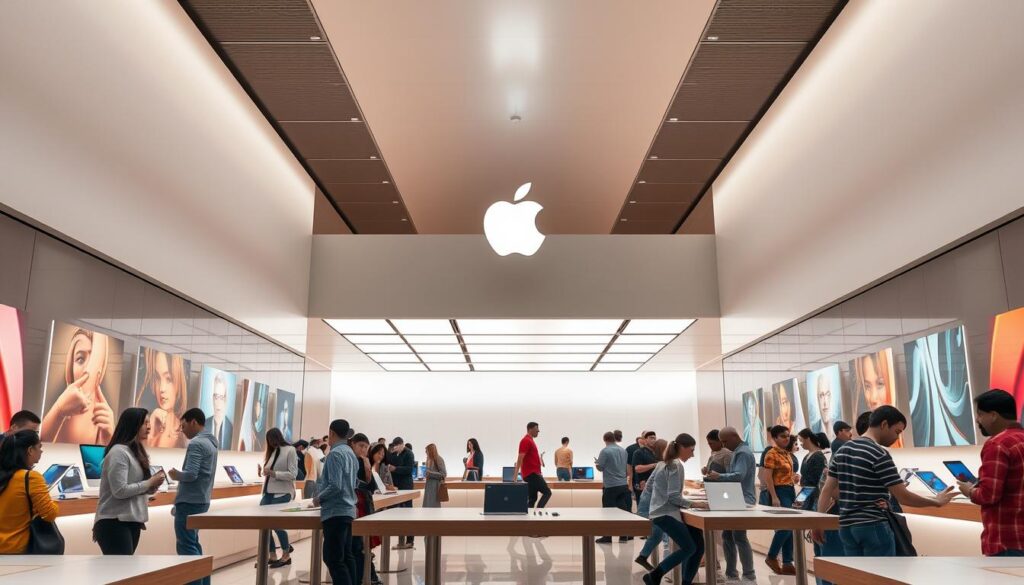
Steps Apple Takes to Measure NPS
We have observed that Apple’s NPS strategy involves multiple meticulous steps to ensure accurate measurement and effective data collection. First, Apple routinely sends out NPS surveys to their customers post-purchase or after a service interaction. These surveys typically ask the essential question: “On a scale of 0-10, how likely are you to recommend our product/service to a friend or colleague?” This enables Apple to gather a large volume of responses, capturing a wide range of customer sentiments.
Subsequently, Apple categorizes responses into Promoters (scores 9-10), Passives (scores 7-8), and Detractors (scores 0-6). This segmentation helps Apple see how many of their customers are enthusiastic advocates versus those who might need more convincing or have had negative experiences.
How Apple Analyzes Customer Feedback
Apple utilizes advanced analytical tools to dissect the NPS data further. Once the quantitative data is collected, Apple engages in qualitative analysis to dive deeper into the responses. Comments and feedback from surveys are categorized based on common themes or issues, helping Apple pinpoint exact pain points or areas for enhancement. This analysis is crucial for Apple’s customer feedback utilization as it reveals the underlying reasons behind the scores.
Moreover, Apple’s data scientists and customer experience teams work together to correlate customer feedback with business metrics, thereby understanding the direct impact of certain feedback on overall business performance.
Examples of Using Customer Feedback to Improve Satisfaction
One notable illustration of Apple’s customer feedback utilization is its enhancement of the iPhone’s battery life. Customers consistently cited battery performance as a critical issue in NPS feedback. By recognizing this through diligent NPS measurement and analysis, Apple implemented significant battery improvements in newer iPhone models.
Similarly, Apple’s introduction of personalized customer support via the Apple Support app stemmed from insights that customers value accessible and tailored technical assistance. The implementation of these satisfaction enhancement techniques demonstrates Apple’s commitment to acting upon customer insights to deliver exceptional user experiences.
Improving Customer Satisfaction with NPS
Improving customer satisfaction with Net Promoter Score (NPS) requires a thoughtful approach that combines strategy and insight. By leveraging NPS data, companies can discover actionable methods to enhance customer experiences and foster substantial customer satisfaction growth.
Strategies for Enhancing Customer Experiences
Companies like Apple have exemplified the power of a strategic NPS application. By collecting and analyzing NPS data, they identify customer pain points and areas for improvement. This structured approach allows for targeted enhancements in product offerings, customer service, and overall brand engagement.
Consider the following strategies for enhancing customer satisfaction:
- Implementing regular NPS surveys to capture real-time customer feedback.
- Using NPS data to prioritize high-impact areas for improvement.
- Fostering a customer-centric culture that values feedback and continuous improvement.
Actions Driven by NPS Insights
Acting on NPS insights is crucial for achieving customer satisfaction growth. When feedback highlights specific issues, immediate action should be taken to resolve them. Successful companies analyze NPS data to shape policies and procedures geared towards better customer experiences.
Here are some actions driven by NPS insights:
- Enhancing digital interfaces to improve user experience.
- Training customer service teams based on feedback patterns.
- Adjusting product features to align with customer preferences.
The impact of implementing these strategies and actions is often quantified through measurable improvements in customer satisfaction, as evidenced by NPS scores over time.
| Company | Strategy Implemented | Result |
|---|---|---|
| Apple | Enhanced Service Support | Increased NPS by 15% |
| Amazon | Personalized Recommendations | Higher Customer Retention Rates |
| Improved Product Features | Higher Customer Satisfaction |
By adopting these practices and closely monitoring NPS scores, companies can continuously refine their efforts, ensuring an iterative process of enhancing customer experiences and driving customer satisfaction growth.
NPS Survey Best Practices
Properly designing and timing NPS surveys can significantly impact the quality and usefulness of feedback collected. Understanding the fundamentals of crafting effective NPS surveys and adhering to optimal survey timing ensures that businesses can derive actionable insights.
Crafting Effective NPS Surveys
Effective NPS surveys begin with clear and concise survey design. The questions should be easily understood and directly relevant to the customer experience. It’s vital to focus on neutrality to avoid leading questions that could skew responses. Additionally, personalizing the survey by addressing customers by their names can create a more engaging and responsive experience.
Guidelines from NPS practitioners suggest starting with a standard NPS question followed by an open-ended question to dive deeper into the customer’s sentiments.
- Keep the survey short to ensure higher response rates.
- Ask a mix of quantitative and qualitative questions.
- Ensure anonymity to get honest and unbiased feedback.
Timing and Frequency of NPS Surveys
The optimal survey timing is crucial for garnering relevant feedback. Surveys must be sent at a moment when the customer’s experience is fresh. For instance, right after a purchase or a customer service interaction.
When considering the frequency of surveys, it’s essential to strike a balance. Over-surveying can lead to survey fatigue, while under-surveying might miss capturing critical customer insights. Based on research, a quarterly survey cadence is often recommended for accuracy without overwhelming customers.
Case studies, such as Apple’s, indicate that regular intervals for NPS surveys can maintain an ongoing dialogue with customers, fostering continuous improvement.
Net Promoter Score Benchmarking
Net Promoter Score (NPS) benchmarking is critical in understanding how a company fares in customer satisfaction and loyalty compared to other players in the industry. This involves an in-depth industry standard comparison to evaluate performance metrics accurately.
Benchmarking Against Industry Standards
When conducting an industry standard comparison, we look at the average NPS scores across various sectors. This gives us a benchmark to determine where a company stands in relative performance. By leveraging NPS benchmark reports, businesses can identify their competitive standing and work towards improving weak spots.
| Industry | Average NPS |
|---|---|
| Technology | 44 |
| Retail | 58 |
| Telecommunications | 31 |
| Healthcare | 27 |
Apple’s NPS Scores Compared to Competitors
Apple’s competitive NPS ranking has consistently outperformed many of its counterparts in the tech industry. According to recent studies, Apple often pools in significantly higher scores due to its focus on customer satisfaction and innovation. Comparing these scores with competitors like Samsung, Google, and Microsoft, Apple’s NPS provides a clear indication of its customer loyalty strength.
With these insights, Apple’s competitive NPS ranking can be viewed as a benchmark for excellence in customer experience, setting a high bar for industry standard comparison.
Customer Feedback Analysis Techniques
To harness the full potential of customer feedback, businesses must go beyond the Net Promoter Score (NPS) and employ a combination of qualitative and quantitative feedback analysis methods. Academic studies highlight the importance of sentiment analysis, where natural language processing tools discern customer emotions from text feedback. This technique grants us deeper insights into the underlying sentiments driving customer loyalty and dissatisfaction.
Another effective feedback interpretation method involves categorizing comments into themes. This allows us to identify recurring issues or praises, thereby prioritizing actions that can have the most significant impact on customer satisfaction. Apple’s multifaceted approach to feedback includes sophisticated business intelligence strategies that integrate data from various sources for a holistic view of customer sentiment.
Additionally, analyzing trends over time can uncover subtle changes in customer perception, which might be missed by a snapshot analysis. By benchmarking our findings against industry standards, we ensure our customer insight strategies remain competitive. These comprehensive methods culminate in actionable insights that foster enhanced customer experiences and sustained loyalty.
FAQ
What is Net Promoter Score (NPS)?
Net Promoter Score (NPS) is a metric used to measure customer loyalty by asking customers how likely they are to recommend a company’s product or service to others on a scale of 0-10. The score is calculated as the percentage of promoters (9-10 score) minus the percentage of detractors (0-6 score).
How does Apple use NPS to drive customer loyalty?
Why is NPS important for businesses?
NPS is crucial for businesses as it provides clear insights into customer loyalty and satisfaction. It helps identify areas for improvement, strategize customer-centric approaches, and ultimately drive growth and retention.
How is NPS calculated?
NPS is calculated using the formula: NPS = % of Promoters (scores 9-10) – % of Detractors (scores 0-6). Customers who score 7-8 are considered passives and are not included in the final calculation.
What strategies does Apple use to collect customer feedback?
Apple collects customer feedback through regular NPS surveys, detailed interviews, and various feedback channels in their retail stores and online platforms. They use this data to make informed decisions about product and service enhancements.
How often should businesses conduct NPS surveys?
The timing and frequency of NPS surveys can vary depending on the business, but they should be conducted regularly enough to track changes in customer sentiment. Many companies opt for quarterly or bi-annual surveys to ensure actionable insights.
What are best practices for crafting effective NPS surveys?
Effective NPS surveys should be concise, clear, and targeted. Questions should be straightforward to avoid confusion, and open-ended questions should be included to gather detailed feedback. Ensuring the survey design is user-friendly will increase response rates.
How does NPS correlation to customer retention?
High NPS scores are often correlated with higher customer retention rates, as promoters are more likely to remain loyal customers and recommend the company to others. This metric gives businesses a reliable indication of their customer loyalty levels.
What is Apple’s competitive NPS ranking among tech companies?
What techniques are used for customer feedback analysis?
Customer feedback analysis techniques include qualitative and quantitative methods such as sentiment analysis, trend analysis, and thematic coding. Advanced tools and software are often utilized to interpret complex feedback data effectively.
Related Posts
- Using NPS to Strengthen Customer Loyalty Programs
- How NPS Can Strengthen Referral Marketing Programs – NPS for Customer Advocacy and Loyalty
- How to Address Ethical Concerns in NPS Survey Design – NPS Ethics and Data Privacy
- How NPS Impacts Customer Loyalty in the Tech Sector – NPS in the Technology Industry

